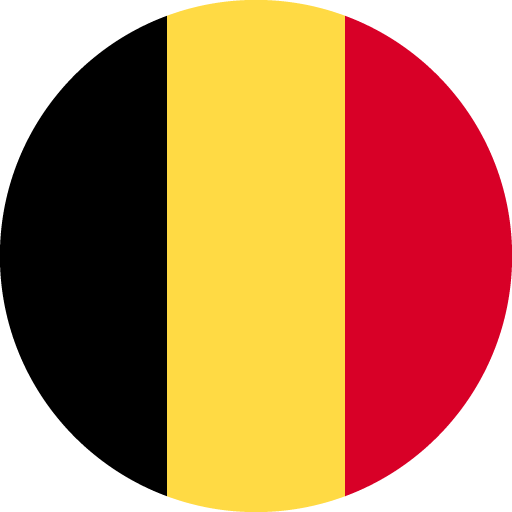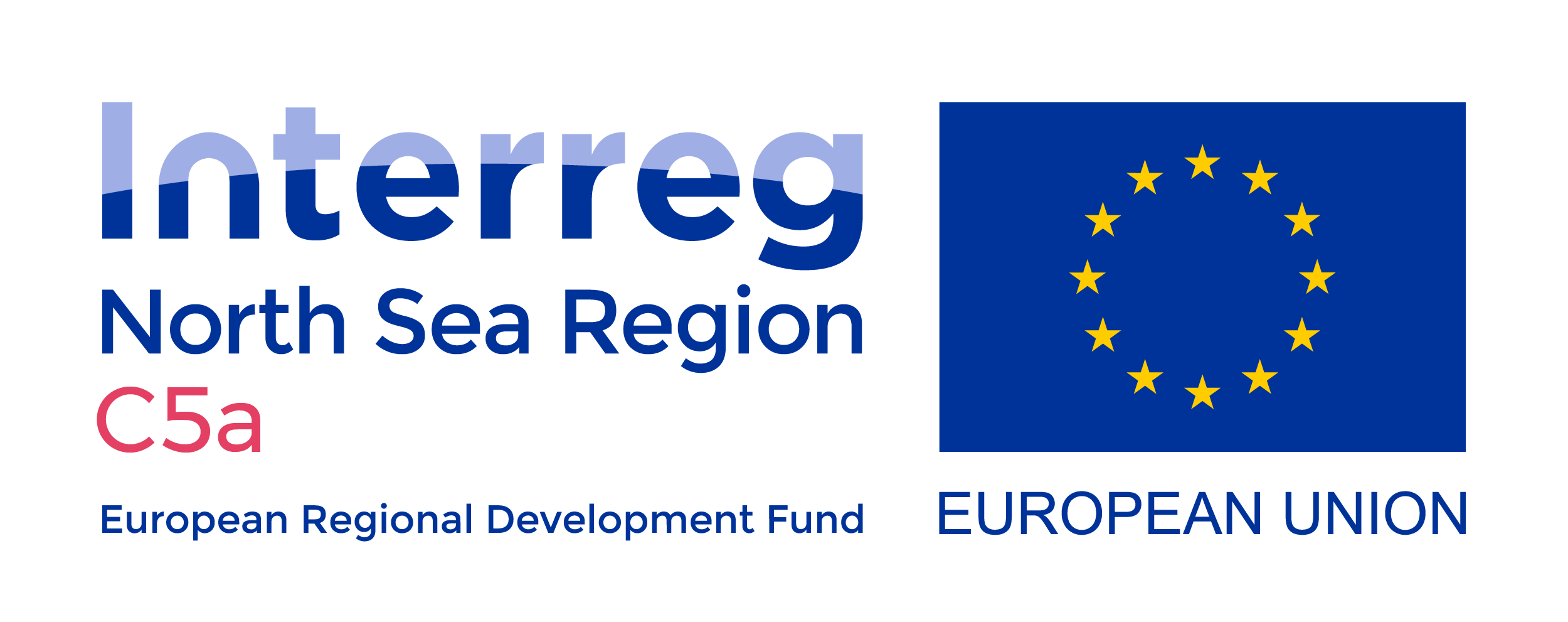Vi använder cookies för att webbplatsen ska fungera på ett bra sätt för dig. Genom att surfa vidare godkänner du att vi använder cookies.
Case Studies
There are seven case studies within the C5a project, located in Denmark, the Netherlands, United Kingdom, Germany, Belgium and Sweden. The seven case studies support the practical development of the Cloud 2 Coast framework. Each case study provides an illustration of the Cloud 2 Coast approach. Each case study provides an illustration of selected aspects of the approach.
Scope and objectives of the cross-comparison
Within the scope of the C5a project, seven cases across the NSR applied the Cloud-2-Coast approach. The cases illustrate how the four pillars of Cloud-2-Coast were tested and experimented in their specific context. This cross-comparison offers an overview of the similarities and differences among the seven cases and identifies joint opportunities towards climate resilience.
The C5a case studies are spread over in six countries (Belgium, Denmark, Germany, the Netherlands, Sweden, the United Kingdom) and four constituent systems (coast, catchment, city and infrastructure networks). The seven case studies are also diverse in terms of their objectives, constituent systems.
Overview of C5a case studies
City of Dordrecht
Climate adaptation objectives:
Integrate urban redevelopment with and water safety
Constituent systems:
City and catchment
Integrate urban redevelopment with and water safety
Constituent systems:
City and catchment
Lead partner:
Rijkswaterstaat, Netherlands
Rijkswaterstaat, Netherlands
River of Klarälven, Värmland
Climate adaptation objectives:
Prevent flooding and provide safe hydropower
Constituent systems:
City and catchment
Prevent flooding and provide safe hydropower
Constituent systems:
City and catchment
Lead partner:
Värmland County Administrative Board, Sweden
Värmland County Administrative Board, Sweden
Weijerswold
Climate adaptation objectives:
Improve flood protection in the upstream and downstream cities
Constituent systems:
City and catchment
Improve flood protection in the upstream and downstream cities
Constituent systems:
City and catchment
Lead partner:
Province of Drenthe, Netherlands
Province of Drenthe, Netherlands
Kent
Climate adaptation objectives:
Integrate adaptation and long-term planning in the water system
Constituent systems:
Coast and catchment
Integrate adaptation and long-term planning in the water system
Constituent systems:
Coast and catchment
Lead partner:
Kent County Council, England
Kent County Council, England
Ringkøbing fjord
Climate adaptation objectives:
Adaptation pathways and governance system in flooding
Constituent systems:
Coast, catchment, and city
Adaptation pathways and governance system in flooding
Constituent systems:
Coast, catchment, and city
Lead partner:
Danish Coastal Authority, Denmark
Danish Coastal Authority, Denmark
The Zwin
Climate adaptation objectives:
Assess climate impacts, pressures on climate change and efficiency of infrastructure network
Constituent systems:
Coast and infrastructure network
Assess climate impacts, pressures on climate change and efficiency of infrastructure network
Constituent systems:
Coast and infrastructure network
Lead partner:
Flanders Environmental Agency, Begium and Netherlands
Flanders Environmental Agency, Begium and Netherlands
Lower Saxony mainland coast
Climate adaptation objectives:
Storm surge safety of the foreland/coastal protection
Constituent systems:
Coast and infrastructure network
Storm surge safety of the foreland/coastal protection
Constituent systems:
Coast and infrastructure network
Lead partner:
Lower Saxony Department for Water, Coastal and Nature Conservation, Germany
Lower Saxony Department for Water, Coastal and Nature Conservation, Germany
Throughout the C5a project, case study leads tested and experimented with the Cloud-2-Coast approach. All partners participated in a co-production process through transnational exchange, which informed the identification of the barriers and enablers for applying the approach in practice.
The process was facilitated with different forms of knowledge co-production:
- Survey of physical and institutional contexts of the case studies and case-specific challenges, barriers and opportunities regarding climate change adaptation,
- Reflection workshops by conducting thematic discussions in each case study,
- Knowledge exchange by facilitating mutual learning, peer-to-peer learning and workshops, and bilateral meetings to support the practitioners in translating the concept into practice,
- Reflexive learning during the coordination group meetings to allow synthesise and in-depth exchange.
These knowledge co-production and exchange processes were affected by the COVID-19 pandemic. The C5a project took place in the midst of mobility restrictions and lockdowns in 2020 and 2021, which disrupted the participation and deliberation processes among project partners and between case study leads and their stakeholders. The project team adapted to these conditions by organizing smaller group discussions instead of large workshops and facilitated internal workshops via virtual meetings.
Comparison of seven cases
The findings, the relevance and applicability of the Cloud-2-Coast approach were demonstrated using its four pillars. Across the seven case studies, the approach is widely represented, with several similarities and differences among the cases.
The application of the Cloud-2-Coast approach is not a ‘once-only’ process, either. To make the best out of it, Cloud-2-Coast should be applied multiple times to compare the results over years and identify improvement points that can be implemented for improving climate resilience. The insights from each application as well as supporting data and documents should be kept within the applying organizations, which will also contribute to preserving institutional memory. The decision on how often to apply the Cloud-2-Coast approach can be guided by the existing local and national policy cycles.
Cross-comparison of C5a case studies
Case study
Whole-system approach
Adaptive approach
Inclusive approach
Continuous dialogue
City of Dordrecht
Spatial limits; temporal limits and drivers of system change
Emphasize the processes change and inter-temporal complexity using pathway thinking and scenarios
A shared language beyond siloes, but require further integration of science-policy-society
Improved process beyond workshops is needed, to allow for dialogue to continue and science-policy integration
River Klarälven, Värmland
Spatial limits and drivers of system change
Facilitate evaluating change with future climate scenarios but with a limit to the extent of the study
Emphasis the value of cooperation across different interest, perspectives and ambitions (process)
Benefited from the process of workshops as well as the role of intermediary group
Weijerswold
Integrate flooding analysis and spatial process
Facilitate discussion on adaptation with climate scenarios and options
Initiate wider participation but limited to governmental bodies
Depend on the integration into organizational planning and across boundaries
Kent
Spatial limits and drivers of system change (work streams)
Facilitate discussion on improving evidence base to demonstrate effectiveness with nature-based solutions
Initiate discussion on the need for a shared vision, overcoming organizational barriers and funding limits
An opportunity to discuss innovative form of knowledge exchange and mutual process of learning
Ringkøbing fjord
Sustainable solutions and broader focus
Engage in risk-based assessment and adaptive planning
Initiate participation from municipality & landowners and risk communication, but challenged with awareness
Facilitate sustained process into climate adaptation plan (DK2020)
The Zwin
Spatially and temporally (bigger, safer and more resilient)
Facilitate discussion with adaptation options
Offer inclusive process with stakeholders
Facilitate further dialogue with the existing issues
Lower Saxony mainland coast
Foreland Management Plan (spatial)
Engagement with adaptation pathways and facilitate planning processes
Emphasis the value of cooperation across different disciplines
Facilitate existing cooperation and expand the stakeholders
The comparison of seven cases shows that using the whole-system approach, practitioners explore spatial-temporal drivers: spatially with the system constituents and temporally of climate scenarios and adaptation pathways. They all consider a whole-system to include broader aspects with facilitating for sustainable solutions. The adaptive approach mostly considers anticipatory measures with developing climate scenarios, and consider the limitations in understanding the climate futures and uncertainty. In the inclusive approach, different elements of process (stakeholder engagement), policy (design and adaptation options), challenges (sensitive settings), and policy entrepreneurs (intermediary groups) were investigated but case studies also consider the limit of previous participation processes. And lastly, all case studies recognise the continuous dialogue beyond the C5a process including the integration of the Cloud-2-Coast into existing governance network and planning processes.






